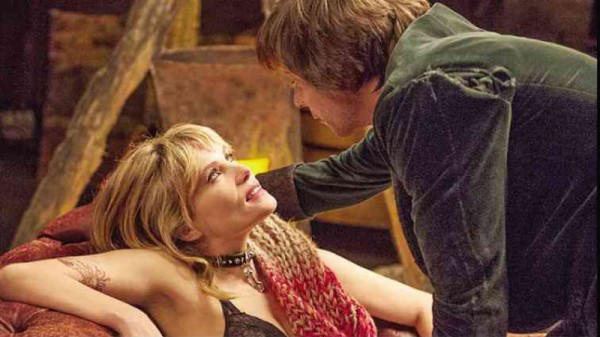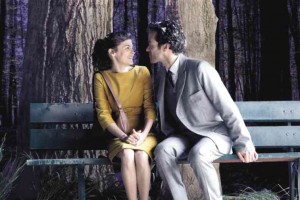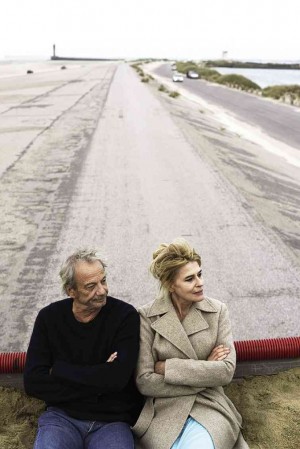Best, latest in French fest
When Gilles Garachon, France’s ambassador to the Philippines, promised a lineup that consisted of the best and latest movies for this year’s French Film Festival, he wasn’t exaggerating.
Most of the nine productions in the lineup were released only in the past year. One of them, “Relationship Status: It’s Complicated (Situation amoureuse: C’est compliqué)” was shown in French theaters in March 2014.
Talk about piping hot.
“We wanted to share with Filipinos contemporary, popular French cinema, for a glimpse of our country’s culture,” Garachon explained. “Although most of these films were commercially successful, they are not the type that would be readily exported to the Philippines.”
Indeed, action and fantasy films produced and directed by France’s most famous cinematic export Luc Besson are periodically shown in local theaters, but not the nine films in the fest which show a different side of French society.
Article continues after this advertisementGarachon noted that the French film industry produced 270 films in 2013, which attracted 193 million moviegoers.
Article continues after this advertisementFrench cinema is too diverse to be limited to Besson and parkour flicks. This year, rom-coms, controversial, literary and political movies share top billing. The movies have also won awards in France and have been shown in international film festivals.
Opening film, David Moreau’s “It Boy (20 ans d’écart),” won Best Actor for lead star Pierre Niney at the Cabourg Romantic Film Festival in France.
Festival centerpiece is Roman Polanski’s “Venus in Fur (La Vénus à la fourrure),” an entry in last year’s Cannes. It won for Polanski two honors: Best Director at the Cesar Awards and Best Screenplay (with David Ives) at the Lumiere Awards.
French Oscars
Cesar is touted as the French Oscars; Lumiere, the French Golden Globes.
François Dupeyron’s “One of a Kind (Mon âme par toi guérie)” got two major nominations: Best Actor at the Cesar Awards for Gregory Gadebois and Best Film at the Prix Louis Delluc.
Emmanuel Mouret’s “Lovers (Une autre vie)” vied for the Golden Leopard at the Locarno International Film Festival in Switzerland last year.
Alexandre Castagnetti’s “Love is in the Air (Amour et turbulences)” competed in the New Directors’ Showcase section of the Seattle International Film Festival in the United States.
Mario Vernoux’s “Bright Days Ahead (Les beaux jours)” picked up two nods at the Cesar Awards: Best Actress for Fanny Ardent and Best Supporting Actor for Patrick Chesnais.
Michel Gondry’s “Mood Indigo (L’Écume des jours)” won Best Production Design for Stephane Rosenbaum at the Cesar Awards.
Lastly, Bertrand Tavernier’s “The French Minister (Quais d’Orsay)” won Best Screenplay (for Tavernier, Abel Lanzax and Christopher Blain) at the San Sebastian International Film Festival in Spain. It also won Best Supporting Actor for Niels Arestrup at the Cesar Awards and Most Promising Young Actor for Raphaël Personnaz at the Lumiere Awards.
Move to Makati
The festival, which is on its 19th year, has not only moved to Greenbelt in Makati, it has also started charging a minimal fee of P100. (Previous fests were free.)
Organizers felt confident enough to implement these changes. “We have developed a loyal audience through the years,” said Martin Macalintal, audio-visual attaché at France’s embassy in Manila. “Last year, our first time in Makati, we had 500 people queuing up.”
Ayala Cinemas, acknowledging the fest’s potential, moved it to a bigger cinema. “Last year, we were in a 165-seater. This year, we are in a 263-seater (Greenbelt 3’s Cinema 1),” said Macalintal. The festival begins tonight and ends June 15.
To mark Philippine Independence Day (on June 12), the festival will screen three Filipino films that premiered in Cannes last year: Lav Diaz’s “Norte, Hangganan ng Kasaysayan,” Erik Matti’s “On the Job” and the digitally restored masterpiece, Lino Brocka’s “Maynila sa mga Kuko ng Liwanag.”
Garachon lauded the strong cinematic links between the two nations. “We consider the Philippines not just another country, but a cultural bridge between Europe and Southeast Asia.”
(E-mail [email protected])




